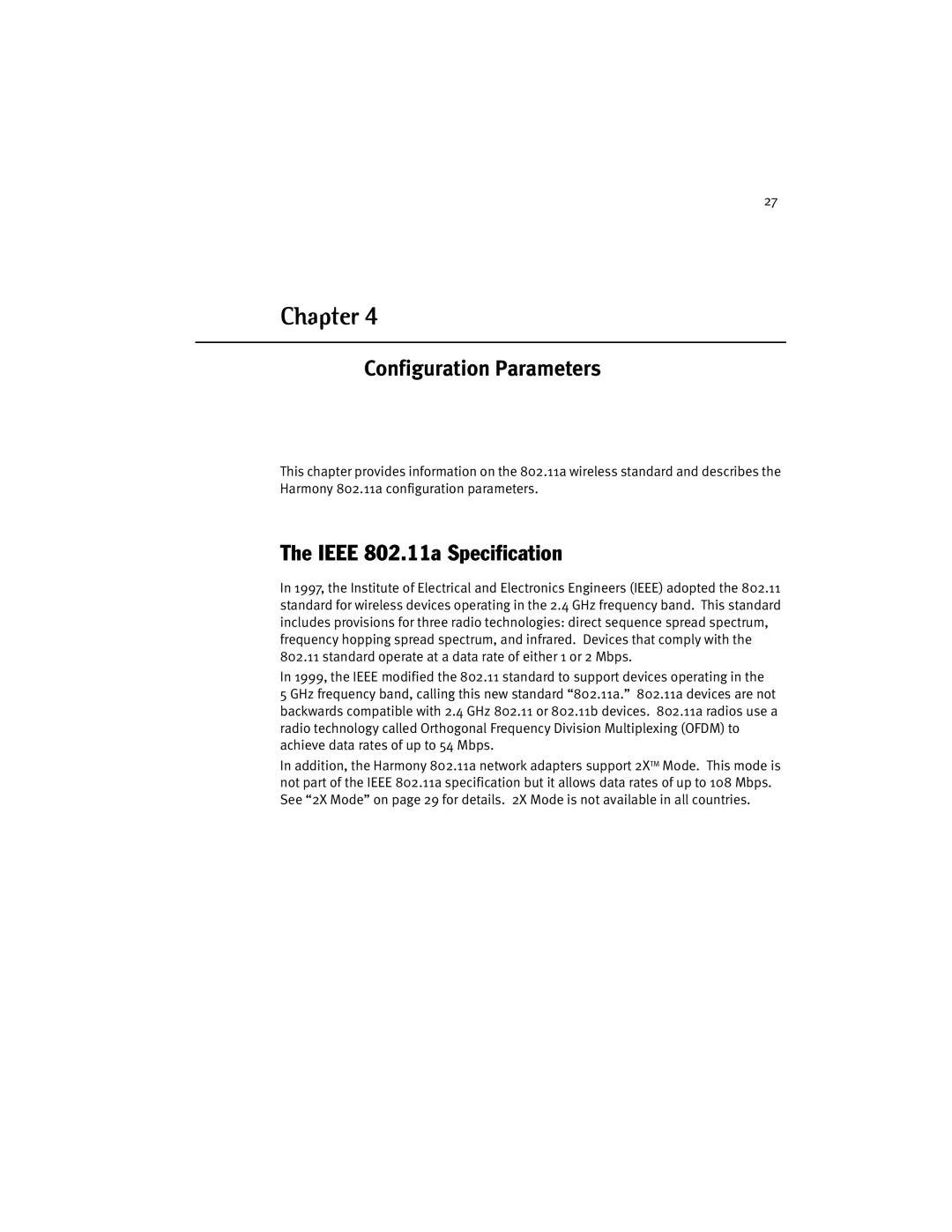27
Chapter 4
Configuration Parameters
This chapter provides information on the 802.11a wireless standard and describes the Harmony 802.11a configuration parameters.
The IEEE 802.11a Specification
In 1997, the Institute of Electrical and Electronics Engineers (IEEE) adopted the 802.11 standard for wireless devices operating in the 2.4 GHz frequency band. This standard includes provisions for three radio technologies: direct sequence spread spectrum, frequency hopping spread spectrum, and infrared. Devices that comply with the 802.11 standard operate at a data rate of either 1 or 2 Mbps.
In 1999, the IEEE modified the 802.11 standard to support devices operating in the
5 GHz frequency band, calling this new standard “802.11a.” 802.11a devices are not backwards compatible with 2.4 GHz 802.11 or 802.11b devices. 802.11a radios use a radio technology called Orthogonal Frequency Division Multiplexing (OFDM) to achieve data rates of up to 54 Mbps.
In addition, the Harmony 802.11a network adapters support 2XTM Mode. This mode is not part of the IEEE 802.11a specification but it allows data rates of up to 108 Mbps. See “2X Mode” on page 29 for details. 2X Mode is not available in all countries.
